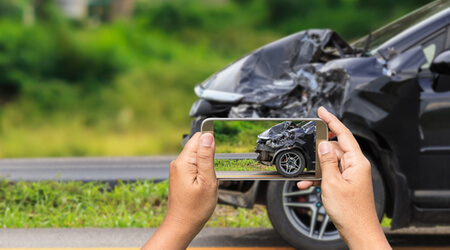Car accidents can be chaotic and disorienting, making it challenging to think clearly in the immediate aftermath. However, taking the right steps at the scene of the accident is crucial for preserving essential evidence that can strengthen your case if you decide to pursue a personal injury claim or seek compensation. In this article, we will outline the steps to take after a car accident to preserve crucial evidence that can support your case.
Prioritise Safety
The safety and well-being of everyone involved in the accident should be your top priority. Check yourself and others for injuries and call emergency services if necessary. Move to a safe location if possible to avoid further accidents or injuries.
Call Law Enforcement
Contact the police to report the accident, no matter how minor it may seem. A police report provides an official record of the accident, documenting the date, time, location, and other relevant details. Police officers will assess the scene, speak to witnesses, and gather information that may be vital in determining fault.
Exchange Information
Exchange contact and insurance information with the other parties involved in the accident. Obtain the names, phone numbers, addresses, driver’s license numbers, and insurance details of all drivers. Also, collect contact information from any witnesses who saw the accident unfold.
Document the Scene
Use your smartphone or any available camera to take pictures of the accident scene, vehicle damage, and any visible injuries. Photographs can provide valuable evidence of the severity of the accident and the conditions at the time of the collision.
Don’t Admit Fault
Avoid admitting fault or apologizing for the accident at the scene. Determining fault is a complex process that requires a thorough investigation. Anything you say at the scene could potentially be used against you later.
Seek Medical Attention
Even if you feel fine or have minor injuries, it is essential to seek medical attention promptly after the accident. Some injuries may not manifest symptoms immediately, and a medical evaluation can help identify and document any injuries you may have sustained.
Preserve Vehicle and Personal Property
If possible, avoid repairing or disposing of your vehicle or any personal property involved in the accident until you have documented the damage and obtained a proper assessment of the cost of repairs or replacements.
Obtain Witness Statements
If there were witnesses to the accident, ask for their contact information and request a brief statement about what they saw. Witness testimonies can provide critical third-party perspectives on the events leading up to the accident.
Obtain a Copy of the Police Report
After the police have filed their report, request a copy for your records. The police report is an official document that can serve as essential evidence in your case.
Contact an Experienced Personal Injury Attorney
Once you have taken the immediate steps to ensure your safety and gather initial evidence, it is advisable to consult with an experienced personal injury attorney. A skilled attorney can help protect your rights, guide you through the legal process, and ensure that you have all the necessary evidence to build a strong case.
Preserving evidence after a car accident is vital for protecting your interests and building a robust personal injury claim. By following the steps outlined in this article, you can ensure that crucial evidence is documented and collected to support your case. Remember, seeking the assistance of an experienced personal injury attorney can significantly enhance your chances of obtaining fair compensation for damages and injuries resulting from the accident. Time is of the essence, so act promptly and take the necessary steps to preserve evidence after a car accident.


Thanks for sharing. I read many of your blog posts, cool, your blog is very good. https://www.binance.info/it/join?ref=S5H7X3LP
I don’t think the title of your article matches the content lol. Just kidding, mainly because I had some doubts after reading the article.
Thanks for sharing. I read many of your blog posts, cool, your blog is very good.
Can you be more specific about the content of your article? After reading it, I still have some doubts. Hope you can help me.
Your article helped me a lot, is there any more related content? Thanks!
Can you be more specific about the content of your article? After reading it, I still have some doubts. Hope you can help me.
Thank you for your sharing. I am worried that I lack creative ideas. It is your article that makes me full of hope. Thank you. But, I have a question, can you help me?
I don’t think the title of your article matches the content lol. Just kidding, mainly because I had some doubts after reading the article.
Thanks for sharing. I read many of your blog posts, cool, your blog is very good.
I don’t think the title of your article matches the content lol. Just kidding, mainly because I had some doubts after reading the article.
I don’t think the title of your article matches the content lol. Just kidding, mainly because I had some doubts after reading the article.
I don’t think the title of your article matches the content lol. Just kidding, mainly because I had some doubts after reading the article.